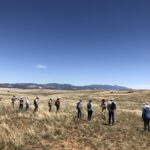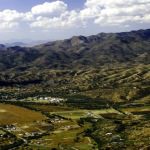By Carolyn Shafer
To be unemployed is scary—especially when one is the head of household and has a child to feed. I have been that person, and I know only too well the frustrations and despair of being unemployed. Many of us, however, have never been in such a situation and know little, if anything, about today’s unemployment problem.
Let’s lay out some statistics that may help. As of January 2014, the nation’s official unemployment rate was 6.6%, a figure federal and state agencies base on “total unemployed as a percent of the civilian labor force.” Out of that, about 5% comprise persons relocating, changing occupations, coming to the end of a seasonal job, or simply not wanting to work.
So where are we locally? According to the Arizona Commerce Authority, as of December 2013, the rate of unemployment in Patagonia was 12.8% (56 people), in Sonoita 6% (28 people) , and in Elgin 16.1% (28 people) . It is unrealistic to expect a 0% unemployment rate. There will always be people who are moving between jobs or who voluntarily choose to be unemployed. Subtracting the 5% that are jobless due to factors listed above, the number of unemployed becomes 34 in Patagonia, 5 in Sonoita and 19 in Elgin. That still leaves people who want to work and can’t find employment, even though there are jobs available. Some jobs can be found in local advertisements or by word of mouth. In addition, there is the Santa Cruz County One Stop Center for Workforce Development, located in Nogales (for information call 520-375-7670). This facility, part of a chain of One Stop Centers throughout Arizona, posts job listings and offers information about career options and instruction on how to conduct a job search, write a resume, and behave during an interview.
In part, the problem of finding employment relates to matching the skills and experience of those seeking jobs to the requirements of the jobs that are available. Some of those who can’t find work need to earn a wage that can support their family but don’t have the skills to qualify for such positions. Others may get turned down for a job because they are overqualified.
Patagonia’s high school seniors who are preparing to enter the job market, are “strongly tied to this community,” according to school counselor Rosann Clark, who has worked in high school counseling for many years. She says that she has never seen any place where students return to their home community at the rate she observes here. The career interests expressed by this year’s graduating class include medicine, environmental sustainability, criminal justice, military service, social service, and ranch management, among others.
In order to stay in their community, these young adults will need to find jobs that suit their career goals within the industries that comprise our local economy. Right now, those industries are primarily ranching, local food production, eco-tourism (hiking, bicycling, birding, etc), retail sales, and wineries. For them, as well as for those in our community whose struggle to find employment is ongoing, our challenge is to define and strengthen a local economy that provides a diversity of livelihoods that are economically stable enough to support all who are willing to work. To be truly sustainable, that economy must also take into account factors contributing to quality of life. Next month, we’ll explore ways of defining a community’s quality of life and evolving a thriving economic model that meets that goal.










